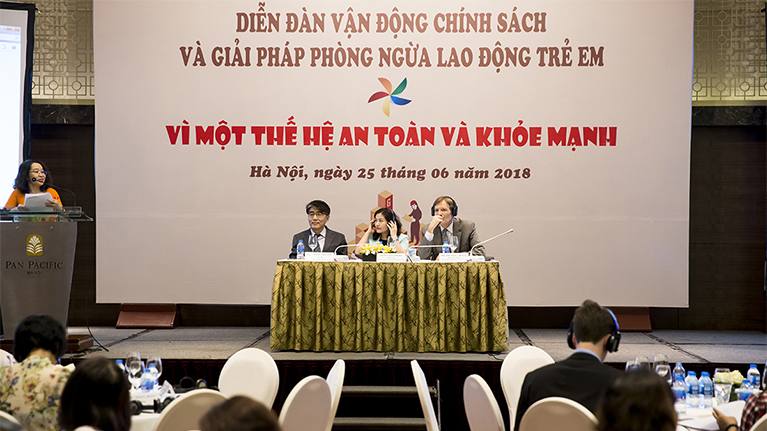Child labour
National alliance key to fight child labour in Viet Nam
A national forum calls on the legal framework to be expanded to the informal economy where the majority of child labourers are found.

The agreement was reached at the national forum on prevention of child labour themed “Generation Safe and Healthy” co-organized in Hanoi on 25 June by the Ministry of Labour, Invalids and Social Affairs (MoLISA) and the ILO.
In the world, the The Global Alliance to Eradicate Forced Labour, Modern Slavery, Human Trafficking and Child Labour, known as Alliance 8.7, was launched in 2016 to help countries achieve the 7th target of Sustainable Development Goal 8: a world free from forced labour, modern slavery, human trafficking and all forms of child labour.
The Global Estimates of Child Labour published in 2017 indicate that globally, 152 million children aged 5 to 17 are in child labour and 73 million are engaged in hazardous work.
All children have the right to be free from all forms of child labour,"
ILO Viet Nam Director Chang-Hee Lee
“Young workers and children are especially vulnerable. They are much less able than adults to assess risks at workplaces.”
Therefore, the ILO, in collaboration with other UN agencies, will support MoLISA to establish the National Alliance 8.7 where partners and stakeholders can join hands in the fight against child labour.
Speaking at the event, MoLISA Vice Minister Nguyen Thi Ha said: “Importantly, to address child labour, particularly to protect children from all forms of hazardous work, we need the active participation, the alliance and close collaboration from all partners in the society – the State agencies, enterprises, trade unions, social organizations, families and the community.”
According to the Vice Minister, Vietnamese Government has made strong commitment to addressing child labour by issuing a series of relevant laws and policies, including the 2012 Labour Code, Law on Occupational Safety and Health, Children’s Law, as well as the National programme on preventing and minimizing child labour for the 2016-20 period.
A key tool for the fight against child labour is the national list of hazardous work prohibited for children under 18 years of age.
However, as the majority of child labourers are found in the informal economy, the head of ILO Viet Nam pointed out the necessity to expand the coverage of the legal framework to prevent child labour in all economic sectors.
Viet Nam has ratified ILO Convention 182 on the Worst Forms of Child Labour and Convention 138 on Minimum Age.
In the country, the ILO is supporting the Government, workers’ and employers’ organizations in their fight against child labour through the project “Enhancing national capacity to prevent and reduce child labour in Viet Nam” with financial support from the US Department of Labor.